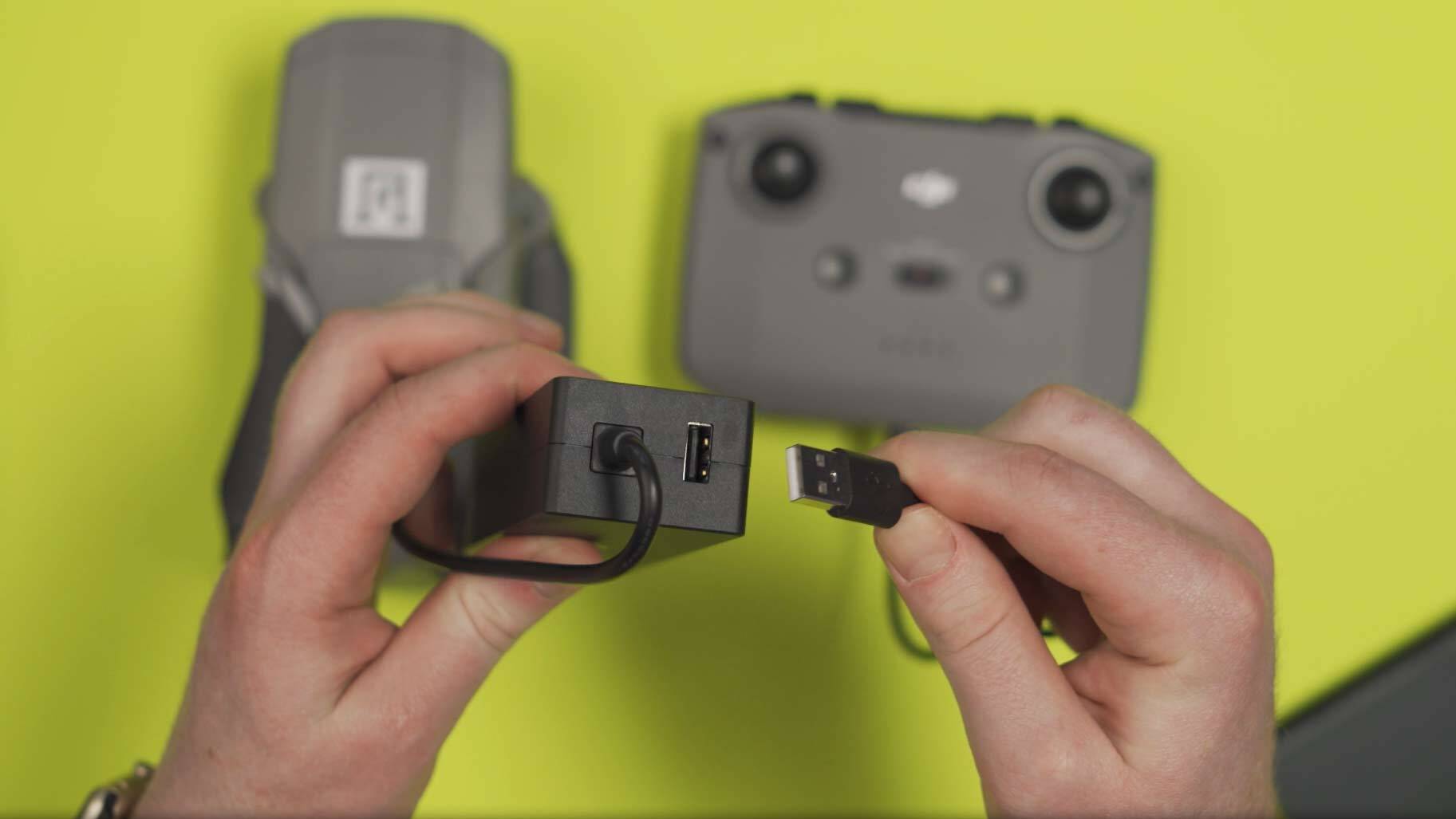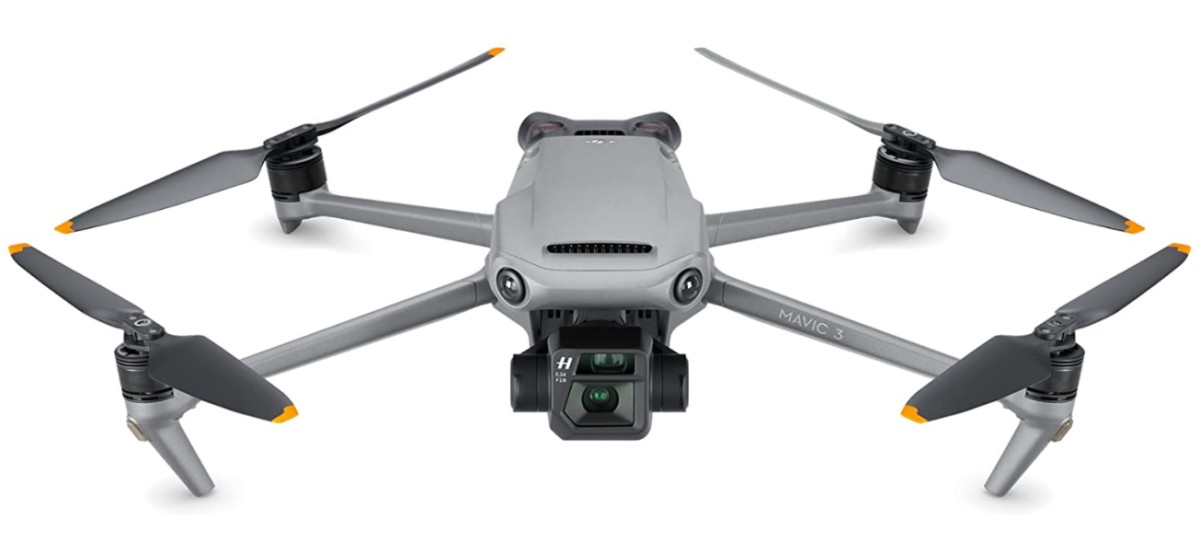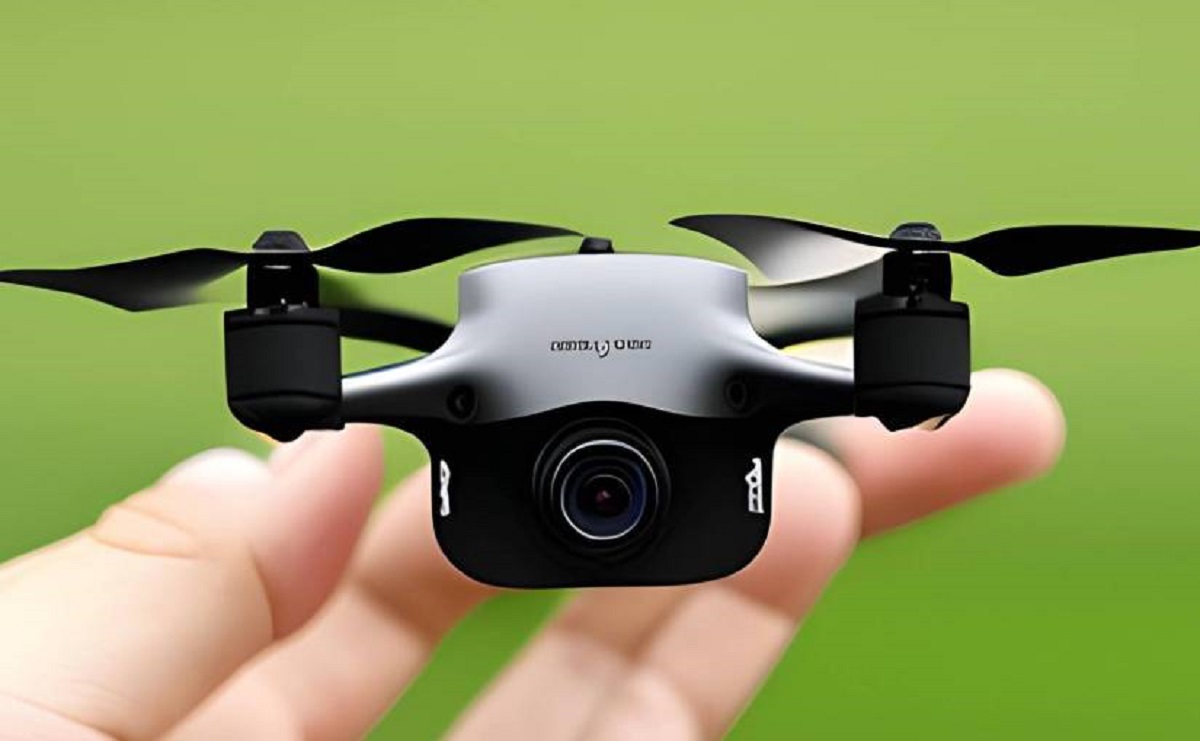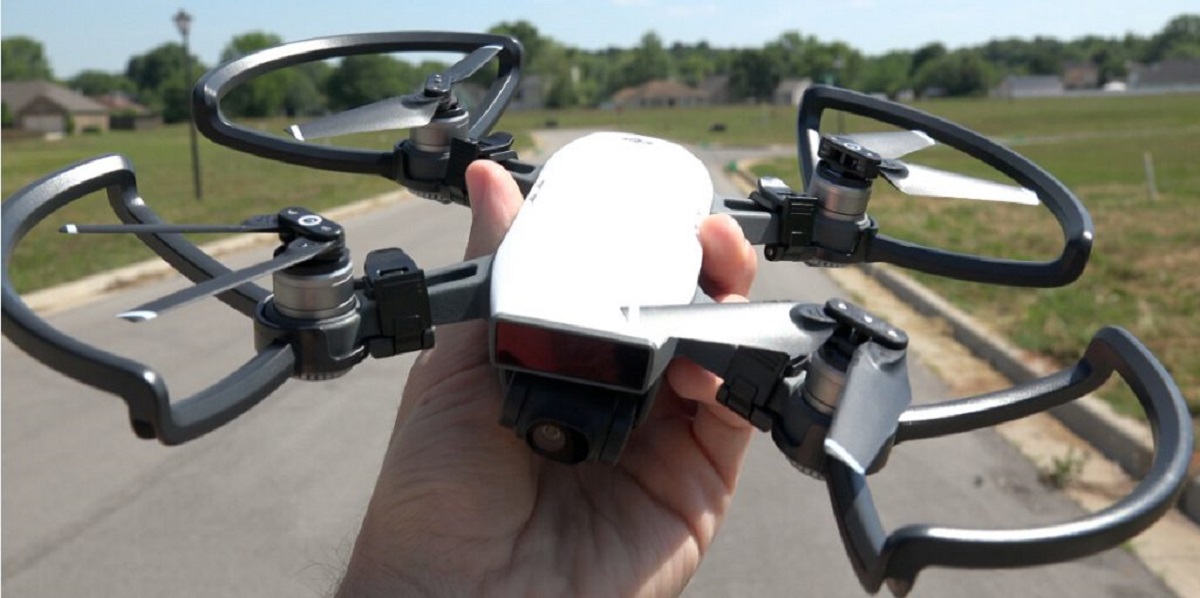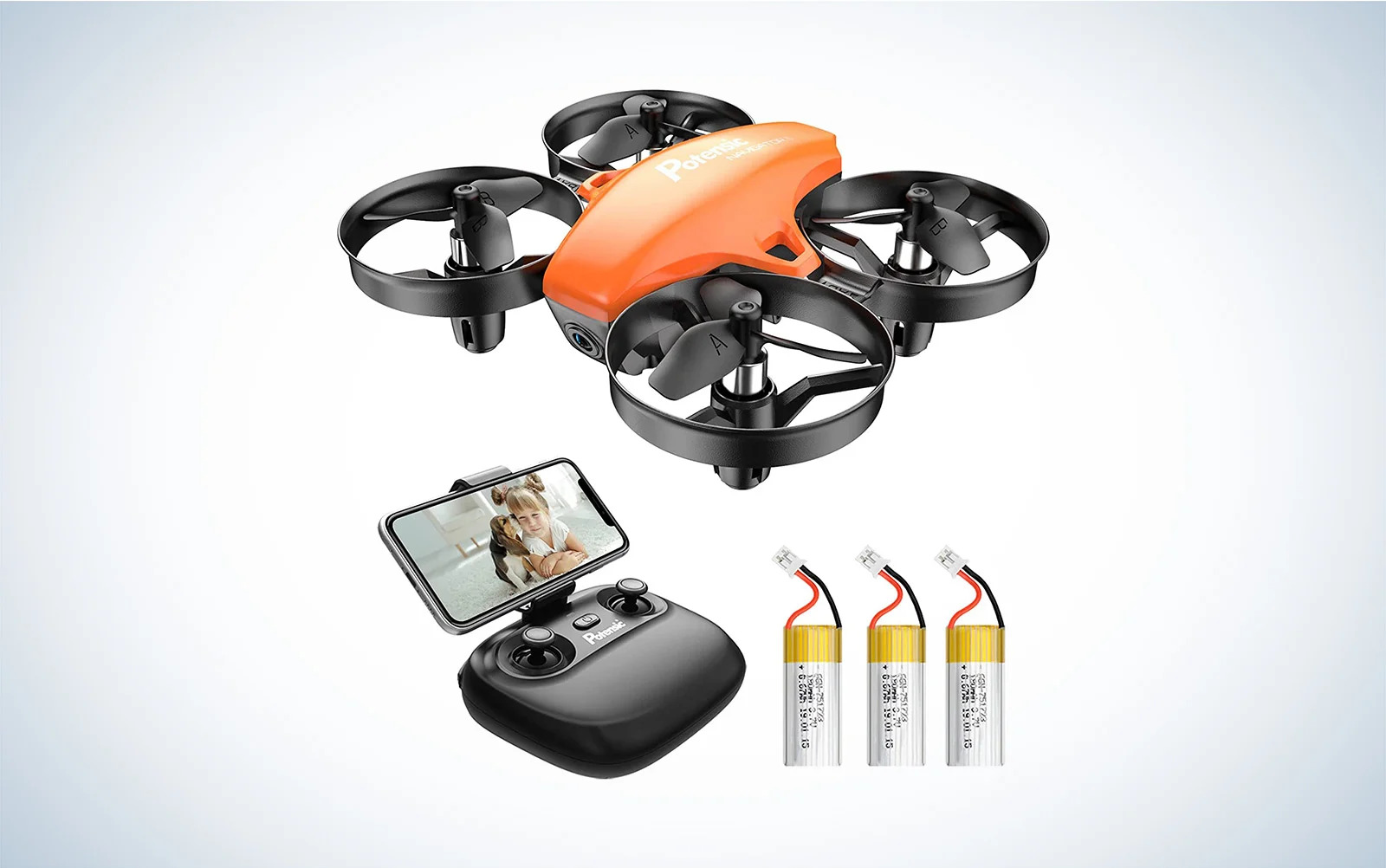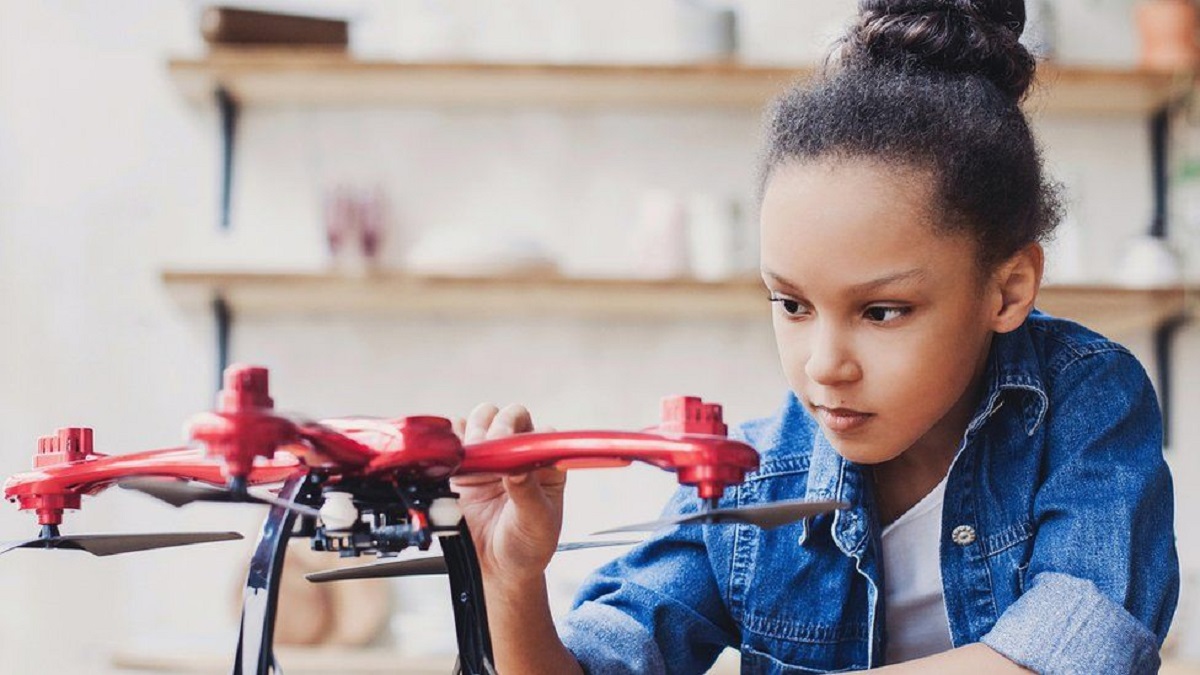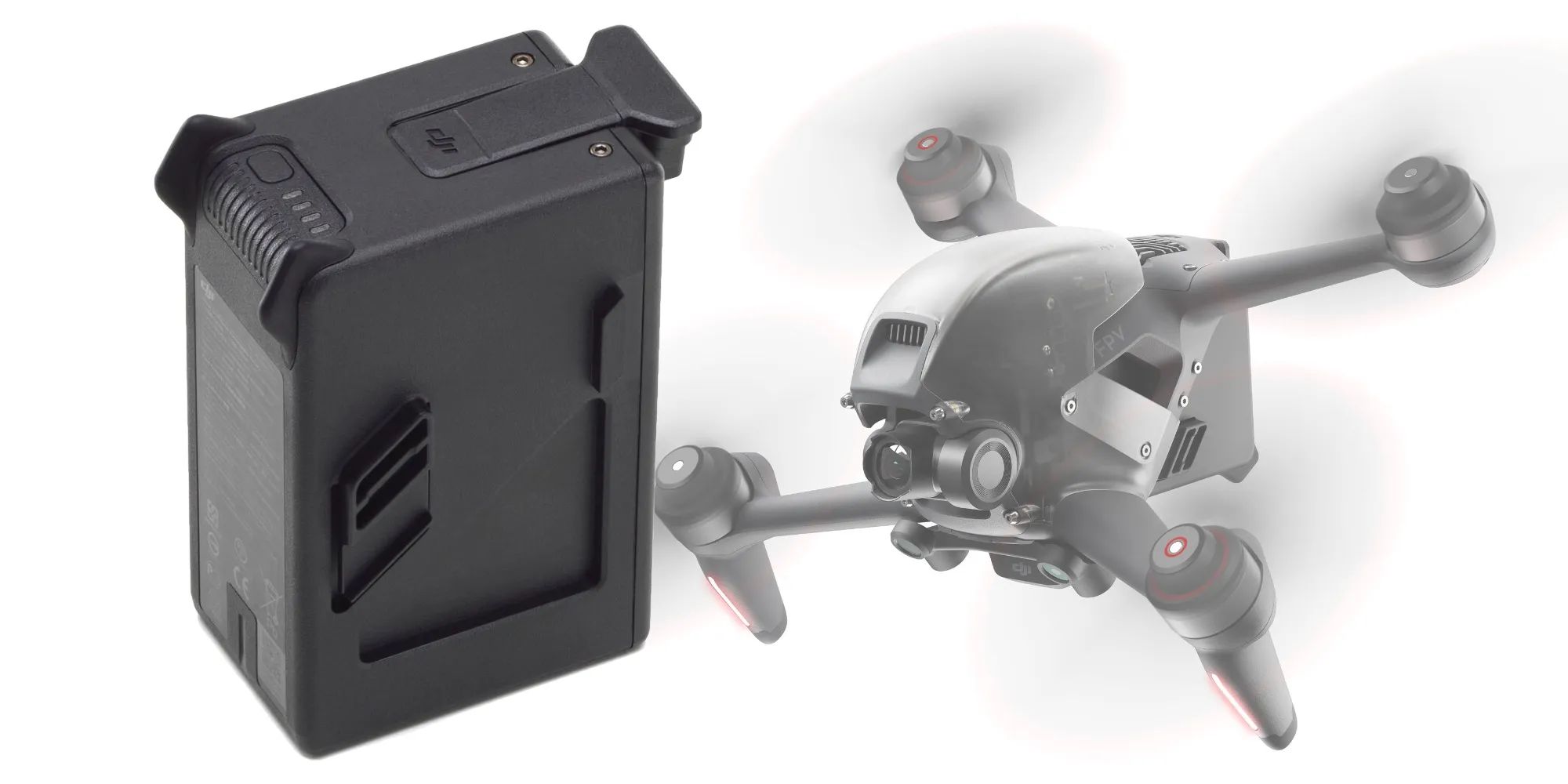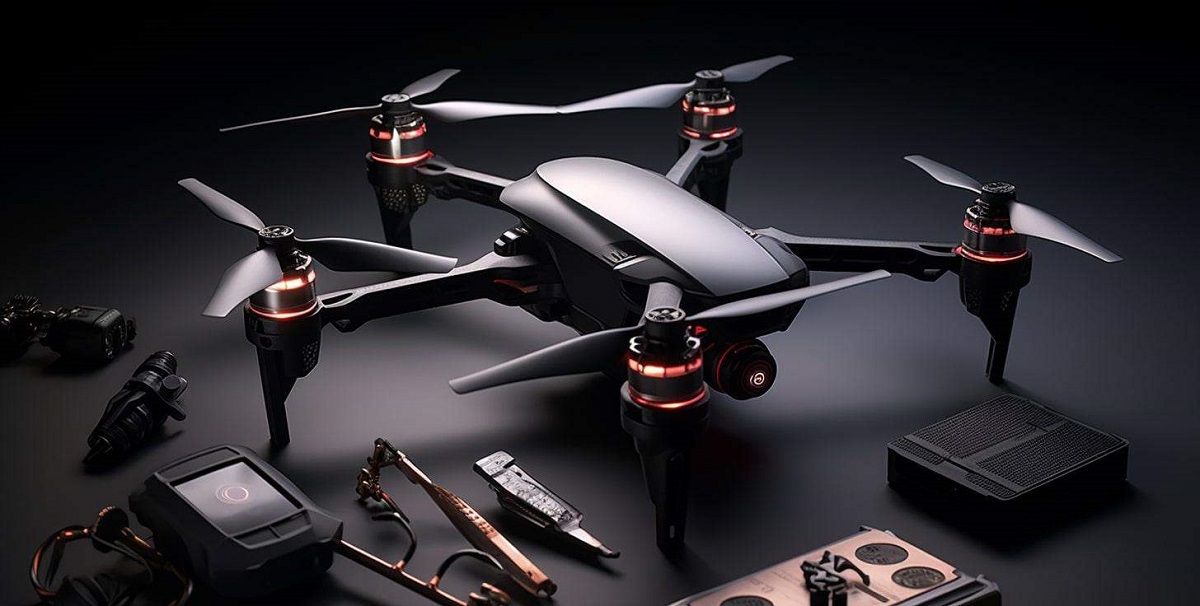Introduction
As the popularity of drones continues to soar, many enthusiasts and professionals are eager to explore the world from a new perspective. However, a key aspect to consider when using drones is the battery life and the time it takes to charge them. Understanding how long it takes to charge a drone battery is crucial for planning your flights and ensuring you have enough power for your aerial adventures.
Drone battery charging time can vary depending on several factors, including the type of battery, the capacity of the battery, the charger used, and environmental conditions. By understanding these factors and implementing effective charging strategies, you can optimize your drone’s battery life and minimize the time spent waiting for a recharge.
In this article, we will delve into the factors that affect drone battery charging time, discuss the different types of drone batteries and their charging characteristics, explore the role of battery chargers, and provide tips to help you reduce charging time. We will also examine the impact of battery life on charging time and compare the charging times of various drone models. Lastly, we will troubleshoot common charging time issues and provide recommendations for a seamless charging experience.
Whether you are a hobbyist or a professional pilot, understanding the intricacies of drone battery charging time will allow you to make more informed decisions, extend your flight time, and ensure that your drone is ready for action whenever you need it.
Factors that Affect Drone Battery Charging Time
Several factors contribute to the overall charging time of a drone battery. By understanding these factors, you can better optimize your charging process and plan accordingly. Let’s take a closer look at the key factors:
- Battery Capacity: The capacity of the drone battery, measured in milliampere-hours (mAh), plays a significant role in charging time. Higher capacity batteries require more time to charge compared to lower capacity ones. It’s important to note that larger, professional-grade drones often come with high-capacity batteries, which can take longer to charge.
- Charger Output: The charging speed also depends on the output power of the charger. Chargers with higher wattage can deliver more current to the battery, leading to faster charging times. Matching the charger’s output with the battery’s recommended charging specifications is essential for efficient and safe charging.
- Charging Method: Different drones and batteries support various charging methods, such as direct charging through the drone or external charging with a separate charger. External chargers typically offer faster charging rates compared to direct drone charging, allowing you to have spare batteries ready to go while others charge.
- Environmental Conditions: Environmental conditions can impact the charging time of a drone battery. Extreme temperatures, both hot and cold, can affect the performance and efficiency of the battery and charger. It is generally recommended to charge batteries within a moderate temperature range for optimal charging speed and battery longevity.
- Battery Health: The condition and health of the drone battery can influence charging time. Over time, batteries can experience capacity degradation or develop internal resistance, which can result in longer charging times. Regularly maintaining and monitoring battery health, such as avoiding deep discharges and storage in recommended conditions, can help optimize charging efficiency.
- Usage Patterns: How the drone battery is used and discharged can impact charging time. Heavy usage, such as flying for extended periods or performing aggressive maneuvers, can drain the battery faster and require longer charging times. Conserving battery power and avoiding rapid discharges can help reduce overall charging time.
By taking these factors into account, you can better understand why charging times may vary and make informed decisions to optimize the charging process for your drone batteries.
Types of Drone Batteries and their Charging Time
Drone batteries are available in various types, each with its own charging characteristics. Understanding the different types of drone batteries and their charging times can help you choose the right battery for your needs and plan your charging process effectively. Let’s explore some commonly used drone battery types and their charging characteristics:
- Lithium Polymer (LiPo) Batteries: LiPo batteries are one of the most common types of batteries used in drones. They offer high energy density and can deliver a significant amount of power. LiPo batteries require special care and attention during charging due to their sensitivity to overcharging, discharging, and extreme temperatures. Charging a LiPo battery typically takes around 1 to 2 hours, depending on the battery’s capacity and the charger’s output power.
- Lithium-Ion (Li-ion) Batteries: Li-ion batteries are also commonly used in drones, especially in consumer-grade models. They offer a good balance between energy capacity and safety. Li-ion batteries typically have a longer charging time compared to LiPo batteries, ranging from 2 to 4 hours. As with LiPo batteries, it is essential to use a charger specifically designed for Li-ion batteries and follow proper charging guidelines.
- Nickel Metal Hydride (NiMH) Batteries: NiMH batteries were commonly used in older drone models and are still used in some entry-level drones. They offer a lower energy density compared to LiPo and Li-ion batteries but are generally more affordable. Charging a NiMH battery can take anywhere from 3 to 6 hours, depending on the battery’s capacity.
- Nickel Cadmium (NiCd) Batteries: NiCd batteries were popular in the past but have become less common due to their lower energy density and environmental concerns. They require careful maintenance and have a longer charging time compared to other battery types. Charging a NiCd battery can take around 4 to 8 hours.
- Smart Batteries: Some drones come with specialized smart batteries that incorporate advanced features like built-in monitoring, communication, and safety mechanisms. These batteries often have dedicated charging systems specifically designed for them. Charging times for smart batteries can vary depending on the specific model and its capacity.
It’s important to note that the charging times mentioned for each battery type are approximate and can vary depending on factors such as battery capacity, charger output, and charging method. Always refer to the manufacturer’s guidelines and recommendations for optimal charging procedures specific to your drone’s battery.
Understanding the different types of batteries and their charging characteristics allows you to make informed decisions when selecting batteries and ensures you allocate the appropriate amount of time for charging.
The Role of Battery Chargers in the Charging Time
Battery chargers play a crucial role in the charging process of drone batteries. The type and quality of the charger you use can significantly impact the charging time and overall battery performance. Let’s delve into the role of battery chargers and how they can affect charging time:
Charging Output: The output power of a charger, typically measured in watts (W), determines how fast it can charge a battery. Chargers with higher wattage outputs can deliver more current to the battery, resulting in faster charging times. It’s important to use a charger that matches the recommended charging specifications of your drone’s battery to optimize charging speed without risking overcharging or damaging the battery.
Balance Charging: Many drone batteries, particularly LiPo batteries, require balance charging. Balance charging ensures that each cell within the battery is charged to the same voltage level, promoting battery health and safety. A charger with built-in balance charging functionality can help maintain the longevity and performance of the battery. However, it’s important to note that balance charging can take slightly longer than regular charging as each cell is charged individually.
Quality and Compatibility: Using a high-quality charger that is specifically designed for your drone’s battery type is crucial for efficient and safe charging. Generic or low-quality chargers may not provide the necessary output power or charging algorithms needed for optimal battery performance. Charging with an incompatible or subpar charger can lead to longer charging times and may even pose a safety risk. Always use chargers recommended by the drone manufacturer or reputable third-party chargers that are compatible with your drone battery.
Charge Management: Some advanced chargers feature intelligent charge management systems that monitor the battery’s voltage, temperature, and charging progress. These chargers can adjust the charging process and optimize the charging parameters for maximum efficiency and battery longevity. They may also provide additional features like storage charging, which prepares the battery for long-term storage without significantly degrading its capacity.
In summary, the charger you use plays a critical role in the overall charging time and performance of your drone battery. Investing in a high-quality charger that matches the charging requirements of your battery type can significantly optimize the charging process and contribute to the longevity and reliability of your drone’s power source.
Tips to Reduce Drone Battery Charging Time
Waiting for a drone battery to charge can be time-consuming, especially when you’re eager to get back in the air. Luckily, there are several tips and strategies you can implement to reduce drone battery charging time. Here are some useful tips to help speed up the charging process:
- Invest in a High-Output Charger: Using a charger with a higher output power can significantly reduce charging time. Look for chargers that have a wattage output equal to or slightly higher than the recommended charging specifications of your drone’s battery. However, always ensure that the charger is compatible and recommended for your specific battery type to avoid any safety risks.
- Monitor Charging Temperature: Higher temperatures can accelerate the charging process, but extreme heat can damage the battery. Aim to charge your drone battery within the recommended temperature range specified by the manufacturer. Charging in a moderate temperature environment can help optimize charging speed and ensure the longevity of the battery.
- Use Separate Charging Ports: If your drone supports charging multiple batteries simultaneously, take advantage of this feature. Charging batteries separately in dedicated charging ports can save time compared to charging them one by one or using a single charging port. It allows you to charge multiple batteries simultaneously, reducing overall charging time.
- Keep Batteries Cool: Before starting the charging process, make sure the batteries are at a cool temperature. If the battery has been recently used and is warm, allow it to cool down before initiating the charging process. This can help prevent the battery from heating up excessively during charging, which could lead to reduced charging efficiency.
- Use Storage Mode: When you don’t plan on using the drone for an extended period, consider utilizing the storage mode on your charger if available. Storage mode optimizes the battery’s charging level for long-term storage, ensuring that it maintains its health while preserving capacity. This can save time on subsequent full charging cycles when you’re ready to use the drone again.
- Optimize Battery Usage: Efficiently managing your drone’s battery usage can help reduce charging time. Avoid unnecessary flights and aggressive maneuvers that drain the battery quickly. Plan your flights carefully and consider the remaining battery life to ensure you don’t exhaust the battery unnecessarily, reducing the time spent waiting for a recharge.
By implementing these tips and incorporating them into your charging routine, you can effectively reduce drone battery charging time and spend more time enjoying your flights in the sky.
Understanding Battery Life and the Impact on Charging Time
Battery life is a crucial aspect to consider when it comes to drone performance and the time it takes to charge the battery. Understanding how battery life affects charging time can help you optimize the charging process and extend the overall lifespan of your drone battery. Let’s explore the relationship between battery life and charging time:
Cycle Count: All batteries have a limited number of charge cycles before their capacity and performance start to degrade. A charge cycle refers to the process of charging the battery from 0% to 100% and discharging it back to 0%. As the battery goes through more charge cycles, it may take longer to charge fully. This is because the battery’s internal resistance increases over time, which can impact the charging efficiency and time required.
Capacity Degradation: Over time, drone batteries may experience capacity degradation, meaning they can store and deliver less energy compared to when they were new. As capacity diminishes, it can take longer to charge the battery to its reduced capacity level. Regularly monitoring the battery’s capacity and health can help you plan for longer charging times as the battery ages.
Charging Efficiency: As batteries age, their charging efficiency may decrease. This can result in longer charging times, even if the battery capacity remains relatively stable. Older batteries may exhibit higher internal resistance, causing more heat during charging, which can slow down the charging process. It is important to keep the battery within the proper temperature range during charging for optimal efficiency.
Optimal Charging Levels: To optimize battery life, many manufacturers recommend avoiding deep discharges and charging the battery before it reaches a critically low level. By maintaining the battery at an optimal charge level and avoiding deep discharges, you can mitigate the risk of capacity degradation and ensure more efficient charging times. Regularly calibrating the battery by fully discharging and then charging it can also help maintain accurate charge level readings.
Battery Maintenance: Proper battery maintenance practices, such as storing the battery in a cool and dry place and avoiding exposure to extreme temperatures, can help preserve its overall performance and charging efficiency. Regularly inspecting the battery for any physical damage or swelling can also help identify issues that may impact the charging process.
By understanding the impact of battery life on charging time, you can take appropriate measures to optimize the charging process, prolong the lifespan of your drone battery, and ensure consistent performance during flights.
Comparing Different Drone Models and Their Charging Time
When it comes to drone models, charging time can vary significantly between different models and brands. Understanding these differences can help you make informed decisions and select a drone that suits your needs and desired charging time. Let’s compare the charging times of different drone models:
Battery Capacity: One of the primary factors influencing the charging time of a drone is the battery capacity. Drones with larger battery capacities generally require more time to charge compared to those with smaller capacities. Professional-grade drones often come with high-capacity batteries, which can necessitate longer charging times. Entry-level drones, on the other hand, may have smaller battery capacities and correspondingly shorter charging times.
Charger Output: The charger that comes with the drone also plays a role in the charging time. Different drone models may include chargers with varying output power. Drones equipped with high-output chargers can charge their batteries faster compared to those with lower-output chargers. However, it’s important to note that using a high-output charger may require additional safety precautions to avoid overcharging or damaging the battery.
Battery Type: The type of battery used in a drone can also affect the charging time. LiPo batteries, for example, generally have a shorter charging time compared to other battery types like Li-ion or NiMH. Some drones may even feature proprietary battery technologies designed to reduce charging time while maintaining optimal performance.
Charging Technology: Drones may incorporate advanced charging technologies that can reduce the overall charging time. For instance, some drones support fast charging or quick charge capabilities, enabling their battery to charge at a faster rate compared to standard charging methods. It’s worth researching different drone models to determine if they offer any unique charging technologies that can expedite the charging process.
Environmental Conditions: It’s important to note that charging time can be influenced by environmental factors such as temperature. Extremely hot or cold temperatures may affect the charging speed and performance of the battery. It’s generally recommended to charge the drone battery within a moderate temperature range for optimal charging efficiency.
Manufacturer Guidelines: Each drone model may come with specific guidelines and recommendations regarding charging time. Manufacturers often provide estimated charging times based on the battery capacity, charger output, and the recommended charging method. It’s essential to follow these guidelines and use the provided charger to ensure safe and efficient charging.
When comparing different drone models, be sure to consider their individual specifications, battery capacity, charger output, and any unique charging features. By doing so, you can select a drone that meets your requirements for charging time and enhance your overall flying experience.
Troubleshooting Common Charging Time Issues
Occasionally, you may encounter certain issues that result in prolonged or inefficient charging times for your drone battery. Addressing these common charging time issues can help you optimize the charging process and ensure that your battery charges effectively. Here are some troubleshooting tips:
- Check Charger and Power Source: Ensure that the charger is securely connected to both the power source and the battery. Loose connections can lead to slower charging or a complete lack of charge. Additionally, verify that the power source is working correctly by testing it with another device or trying a different power outlet.
- Inspect Charging Cable and Connectors: Check the charging cable and connectors for any signs of damage or wear. Bent pins, frayed cables, or loose connections can hinder the charging process. If you notice any issues, replace the charging cable or connector to ensure a proper and stable connection during charging.
- Clean Charging Contacts: Dirt, debris, or corrosion on the charging contacts can interfere with the charging process. Gently clean the charging contacts on both the battery and the charger using a soft, lint-free cloth or a clean brush. This will help establish a better connection and improve the charging efficiency.
- Remove Battery from Drone: In some cases, charging the battery while it is still installed in the drone may result in slower or inefficient charging. Try removing the battery from the drone and connecting it directly to the charger. This can help eliminate any potential interference or power drain from the drone’s systems and improve the charging speed.
- Avoid Multitasking: Charging multiple batteries or using the drone’s features while charging can significantly increase the charging time. It is best to charge a single battery at a time and avoid using the drone or engaging any power-consuming functions during the charging process.
- Monitor Battery Health: Regularly monitor the health of your drone battery to identify any potential issues that may impact charging time. Check for signs of swelling, damage, or capacity degradation. If you notice any abnormalities, such as a significant decrease in flight time or a sudden increase in charging time, consider replacing the battery to maintain optimal charging performance.
If you continue to experience prolonged charging times despite troubleshooting these common issues, it may be necessary to consult the manufacturer’s support or seek professional assistance to diagnose and rectify the problem.
By addressing these common charging time issues proactively, you can ensure efficient charging and maximize the lifespan of your drone battery.
Conclusion
Understanding the factors that affect drone battery charging time is essential for optimizing your charging process and maximizing your time in the air. By considering factors such as battery capacity, charger output, charging method, environmental conditions, battery health, and usage patterns, you can effectively plan and reduce the time spent waiting for your drone battery to charge.
Different types of drone batteries, such as LiPo, Li-ion, NiMH, and NiCd, have varying charging characteristics. It’s important to choose the right battery type for your needs and follow the manufacturer’s recommendations for charging to ensure efficient and safe charging.
The quality and compatibility of the charger you use play a crucial role in the charging time and overall battery performance. Investing in a high-quality charger with the appropriate output power and charging capabilities can significantly optimize your charging process.
Moreover, understanding battery life and its impact on charging time allows you to take proper measures to prolong the lifespan of your drone battery and ensure consistent performance during your flights. Regular maintenance, proper storage, and avoiding deep discharges are all vital factors in optimizing charging time and battery longevity.
Comparing the charging times of different drone models, considering their battery capacity, charger output, and unique charging features, will help you select a drone that aligns with your desired charging time and flying demands.
Lastly, troubleshooting common charging time issues, such as checking the charger and power source, inspecting charging cables and connectors, cleaning charging contacts, removing the battery from the drone, avoiding multitasking, and monitoring battery health, can help resolve issues that may prolong charging times and ensure efficient and effective charging.
By implementing these strategies, you can minimize charging time, maximize flight time, and enjoy uninterrupted aerial adventures with your drone.







